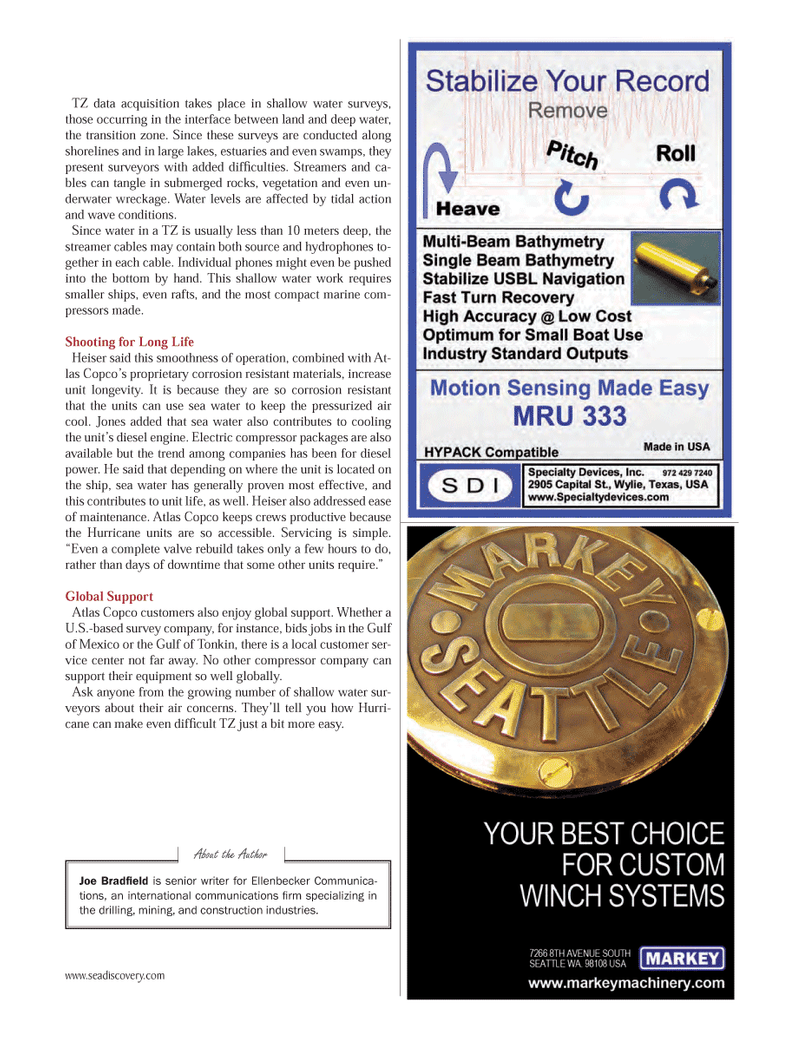
Page 41: of Marine Technology Magazine (June 2012)
AUV Arctic Operations
Read this page in Pdf, Flash or Html5 edition of June 2012 Marine Technology Magazine
TZ data acquisition takes place in shallow water surveys, those occurring in the interface between land and deep water, the transition zone. Since these surveys are conducted along shorelines and in large lakes, estuaries and even swamps, they present surveyors with added difÞ culties. Streamers and ca- bles can tangle in submerged rocks, vegetation and even un- derwater wreckage. Water levels are affected by tidal action and wave conditions. Since water in a TZ is usually less than 10 meters deep, the streamer cables may contain both source and hydrophones to-gether in each cable. Individual phones might even be pushed into the bottom by hand. This shallow water work requires smaller ships, even rafts, and the most compact marine com- pressors made.Shooting for Long Life Heiser said this smoothness of operation, combined with At- las CopcoÕs proprietary corrosion resistant materials, increase unit longevity. It is because they are so corrosion resistant that the units can use sea water to keep the pressurized air cool. Jones added that sea water also contributes to cooling the unitÕs diesel engine. Electric compressor packages are also available but the trend among companies has been for diesel power. He said that depending on where the unit is located on the ship, sea water has generally proven most effective, and this contributes to unit life, as well. Heiser also addressed ease of maintenance. Atlas Copco keeps crews productive because the Hurricane units are so accessible. Servicing is simple. ÒEven a complete valve rebuild takes only a few hours to do, rather than days of downtime that some other units require.Ó Global SupportAtlas Copco customers also enjoy global support. Whether a U.S.-based survey company, for instance, bids jobs in the Gulf of Mexico or the Gulf of Tonkin, there is a local customer ser- vice center not far away. No other compressor company can support their equipment so well globally. Ask anyone from the growing number of shallow water sur- veyors about their air concerns. TheyÕll tell you how Hurri- cane can make even difÞ cult TZ just a bit more easy. About the AuthorJoe BradÞ eld is senior writer for Ellenbecker Communica- tions, an international communications Þ rm specializing in the drilling, mining, and construction industries.www.seadiscovery.com MTR #5 (34-49).indd 41MTR #5 (34-49).indd 415/31/2012 10:24:35 AM5/31/2012 10:24:35 AM

 40
40

 42
42
